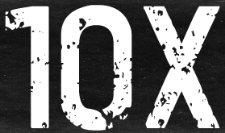7 Strategies for 10x Transformative Change

Peter Thiel, VC, PayPal co-founder, early Facebook investor, and most importantly, the supposed inspiration for Silicon Valley's intriguing Peter Gregory character, argues in his book Zero to One that a successful business needs to make a product that is 10 times better than its closest competitor.
The title Zero to One refers to the idea of progress as either horizontal/extensive or vertical/intensive. For a more detailed explanation take a look at Peter Thiel's CS183: Startup - Class 1 Notes Essay.
Horizontal/extensive progress refers to copying things that work. Observe, imitate, and repeat. The one word summary for the concept is "globalization.” For more on this PAYPAL MAFIA: Reid Hoffman & Peter Thiel's Master Class in China is an interesting watch.
Vertical/intensive progress means doing something genuinely new, that is going from zero to one, as apposed to going from one to N, which is merely globalization. This is the creative spark. The hero's journey of over coming obstacles on the way to becoming the Master of the Universe you were always meant to be.
We see this pattern with Google a lot. Google often hits scaling challenges long before anyone else and because they have a systematizing culture they produce discrete replicatable technologies that then diffuse out to the rest of the world, often through open source efforts.
Google told us about the Google File System in 2003, MapReduce in 2004, Bigtable in 2006, The Datacenter as a Computer in 2009, Percolator (real-time updates) in 2010, Pregel (graph processing) in 2010, Dremel (interactive analysis) in 2010, Spanner (globally distributed database) in 2012, Omega (cluster scheduling) in 2013, Borg (cluster manager) in 2015, and Jupiter Rising (advanced networking) in 2015.
Sometime later we've seen the development of open source parallels like HDFS, Hadoop, HBase, Giraph, YARN, Drill, and Mesos.
So, how can you rise up and meet the 10x challenge?
Murat Demirbas, a computer science and engineering professor at SUNY Buffalo, and awesome writer on all things distributed, came up with some good suggestions in How to go for 10X:
- Aim big: Don't go for the incremental, pursue the transformative. Eschew the incremental. Change your mind to think big. Embrace the idea of moonshots.
- Use the Pareto principle effectively and you are halfway there. Hit the spot where the biggest results are possible.
- Adopt/Invent better tools. Invent that transformative tools you need yourself. How can you create order of magnitude improvements using old school tools?
- Be agile and use rapid prototyping. Fail fast, learn, and move on to the next attack.
- Collaborate. To be the best you have to work with the best.
- Employ meta thinking. Think process. Attack problems you can solve until you can finally overcome the harder problem.
- Practice deliberately, and see what works. Deliberately practice boldness. Don't get stuck in the old ways.
For more details please see the original article.
Where do you start? What problem do you work on? Peter Thiel asks you to think of a most interesting question: What important truth do very few people agree with you on?




